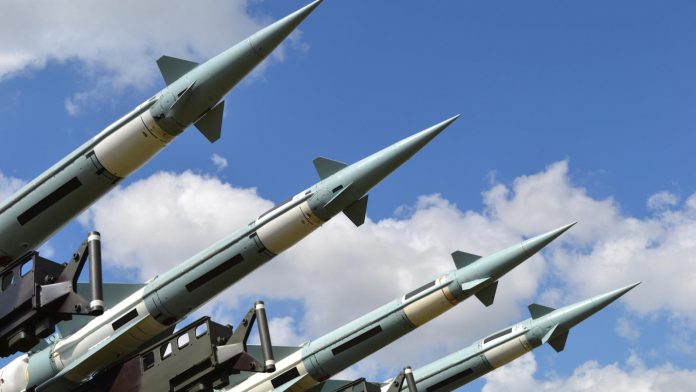This article is written by Daisy Jain, pursuing B.COM.LLB (Hons) from the Institute of Law, Nirma University. This is an exhaustive article which deals with the analysis of the Iran nuclear agreement.
Table of Contents
Introduction
The Iran nuclear deal, formally known as the Joint Comprehensive Plan of Action (JCPOA), was signed in July 2015 by Iran and numerous international countries, including the United States. In consideration of billions of dollars in lifting sanctions, Iran pledged to destroy much of its nuclear program and disclose its sites to more thorough foreign scrutiny. Defenders of the Agreement claimed that it would help avoid a resurgence of Iran’s nuclear weapons program, reducing the likelihood of confrontation between Iran and its neighboring enemies, such as Saudi Arabia and Israel.
Meanwhile, since President Donald Trump removed the United States from the agreement in 2018, the accord has been at risk. Iran has restarted some nuclear activity in retribution for the US exit and lethal assaults on notable Iranians in 2020, including the one by the US. President Joe Biden stated in 2021 that the US will revert to the agreement if Iran returns to adherence, though Iran’s officials have demanded that Washington first eliminate sanctions. In nuclear talks, Ebrahim Raisi, a conservative cleric elected president of Iran in June, has signaled that he will adopt a tougher stance than his previous one.
The parties involved
The Joint Comprehensive Plan of Action (JCPOA), which took effect in January 2016. Places constraints on Iran’s civilian nuclear enrichment program. The five permanent members of the UN Security Council (Russia, China, the United States, France, and the United Kingdom) including Germany, commonly referred to as the P5+1, were at the core of discussions with Iran. The European Union was also present. Some of the middle eastern powers were also present such as Saudi Arabia, for example, said that they should have been notified or engaged in the negotiations because they would be the most impacted by a nuclear-armed Iran. Israel was outspoken in its opposition to the pact, claiming it was too mild.
What were the primary goals
The P5+1 aimed to slow down Iran’s nuclear development to the extent where pursuing a nuclear weapon would probably take a year, giving international powers time to answer. In the run-up to the JCPOA talks, US intelligence agencies predicted that if no agreement was reached, Iran could create adequate nuclear material for a bomb in a matter of months. Iran’s efforts to become a nuclear-weapons state alarmed participating nations, who anticipated a new conflict in the region. Israel has conducted anticipatory military action targeting alleged nuclear sites in Syria and Iraq and may do so against Iran, potentially provoking retaliation from Hezbollah in Lebanon or delays in oil transport in the Persian Gulf. Saudi Arabia has also stated that if Iran ultimately deploys a nuclear bomb, it is eager to acquire one.
As a participant in the Nuclear Non-proliferation Treaty, which has been in effect since 1970, Iran had initially promised to refrain from developing nuclear weapons. Nevertheless, when the Pahlavi monarchy was deposed in 1979, Iranian elites explored this technology covertly. (According to US intelligence analysts, Iran stopped working on nuclear weapons in 2003 but proceeded to collect nuclear technology and experience). Before the JCPOA, the P5+1 had been engaging with Iran for years, proposing numerous concessions to the Iranian leadership to stop enriching uranium. Following President Hassan Rouhani’s reformist victory in 2013, the parties reached a preliminary agreement to lead discussions towards a broader settlement. Iran, for its role, requested the JCPOA to be relieved of international sanctions that had depleted its economy by more than $100 billion in just the years 2012–2014.
What agreement did Iran and other signatories make?
Nuclear restrictions
Iran agreed in this agreement that it would not enrich any more plutonium and uranium, both of which might be used in nuclear weapons. It also made measures to verify that its services in Fordow, Natanz, and Arak, which are enrichment plants, were only used for civilian purposes, including as medical and industrial research. The agreement restricts the types and numbers of centrifuges Iran can use, as well as the amount of enrichment and the volume of its enriched uranium reserve. (Mined uranium contains less than 1% of the uranium-235 isotope needed in fission processes, which is amplified by centrifuges.) Uranium that has been enriched to a concentration of 5% is used in nuclear power plants, while uranium that has been enriched to a concentration of 20% can be utilized in research reactors or for medical purposes. Nuclear weapons require high-enriched uranium, which is 90 percent enriched.)
Monitoring and verification
Iran promised to ultimately execute a mechanism allowing the International Atomic Energy Agency (IAEA), the UN’s nuclear investigator, unrestricted entry to its nuclear services and possibly undisclosed outposts. The inspections are meant to prevent Iran from developing nuclear weapons covertly, as it has purportedly undertaken in the past. The International Atomic Energy Agency (IAEA) has produced quarterly reports to its board of governors and the UN Security Council on Iran’s nuclear undertakings. The Joint Commission, which comprises representatives from all of the negotiating parties, oversees the agreement’s implementation and addresses any issues that may emerge. IAEA inspectors can seek admittance to suspected, undisclosed installations with a majority vote of its members. The organization is also in charge of transferring nuclear-related or dual-use materials.
Sanctions relief
The European Union, the United Nations, and the United States have all agreed to suspend their nuclear-related sanctions against Iran. Meanwhile, many other US sanctions against Iran persisted in place, some dating back to the 1979 hostage crisis. They address issues like Iran’s ballistic missile development, backing for terrorist organizations, and human rights violations. Despite its commitment to eliminate sanctions on oil exports, the US maintained budgetary transaction restrictions, which have stifled foreign trade with Iran.
Weapons embargo
After five years, the parties consented to relax a UN prohibition on Iran’s sale of customary weapons and ballistic missiles if the IAEA determines that Iran is only involved in civilian nuclear activity.
Enforcement of Iran nuclear deal
If any participant believes Iran is breaking the terms of the agreement, the UN Security Council may consider whether to keep sanctions relief in place. This “snapback” method is in place for ten years, after which the UN sanctions will be lifted indefinitely. The US stated its plan to reintroduce sanctions in April 2020. The other P5 nations reacted angrily to the measure, claiming that the US could not execute the system autonomously because it had exited the nuclear deal in 2018. The deal had a rather easy start. In early 2016, the IAEA verified that Iran had completed its preliminary commitments, and the US, EU, and UN retaliated by removing or postponing sanctions. Most importantly, US President Barack Obama’s administration lifted secondary sanctions on the oil sector, allowing Iran to increase its oil exports to levels similar to those before the sanctions were imposed. A total of $100 billion in frozen Iranian assets was also unfrozen by the US and many European countries.
The US earlier withdrew from JCPOA because it identified the JCPOA’s ephemeral nature and lack of limits on Iran’s ballistic missile development as key flaws. Trump again chastised Iran for its activities in Syria and throughout the region, which he described as ‘malign behavior’. Meanwhile, since President Trump pulled the US from the agreement in 2018 and reintroduced debilitating banking and energy sanctions, the Pact has been on the verge of collapsing. Trump argued that the agreement neglected to acknowledge Iran’s ballistic missile development and regional proxy warfare and that the sunset clauses would allow Iran to obtain nuclear weapons in the long term. Iran lambasted the US for breaking its promises and chastised Europe for bowing to American unilateralism. France, Germany, and the United Kingdom developed INSTEX, a barter mechanism to permit transactions with Iran outside of the US banking system, in an effort to keep the accord alive. The system, though, is exclusively intended for food and medication, both of which are currently free from US sanctions. Following the United States’ exit, numerous nations, including US allies, proceeded to buy Iranian oil under waivers provided by the Trump administration, and Iran kept its promises. However, the waivers were terminated a year later, with the goal of totally eliminating Iran’s oil shipments.
Iran’s current nuclear activity
In 2019, Iran began breaking agreed-upon limitations on its stockpile of low-enriched uranium and commenced enriching uranium to greater quantities in reaction to the other signatories’ actions, which Tehran contended constituted violations of the accord (though still far short of the purity required for weapons). It also resumed heavy water manufacturing at its Arak plant and began enriching uranium at Fordow, rendering the isotopes generated there useless for medicinal reasons.
Iran made more paces away from its nuclear obligations in 2020 due to continued attacks on its interests. Iran said in January that it will no longer limit its uranium enrichment after the aimed execution of a prominent Iranian general, Qasem Soleimani, by the US. It started building a centrifuge manufacturing centre at Natanz in October to supplant one that was wrecked months before in an attack on Israel. In November, Iran’s Parliament enacted a measure that resulted in a significant increase in uranium enrichment at Fordow, in retaliation to the killing of a renowned nuclear scientist, which is also blamed on Israel. Iran imposed novel constraints on the IAEA’s capacity to monitor its sites the subsequent year and promptly terminated its inspection agreement with the agency.
Impact of JCPOA on the Iranian economy
Iran’s economy experienced severe years of economic downturn, currency depreciation, and hyperinflation earlier to the JCPOA, owing mostly to sanctions on its energy sector. As Iran recovered trading partners, notably in the EU, inflation eased, currency rates steadied, and exports—particularly of oil, agricultural goods, and luxury items—soared. Iran started exporting more than 2.1 million barrels per day after the JCPOA went into action (approaching pre-2012 levels, when the oil sanctions were originally put in place). These changes, however, did not result in a large boost in the budget of the normal Iranian household.
The expiry of oil export sanctions waivers and the reintroduction of US sanctions in 2018 has harmed a crucial source of government revenue once again: oil and petroleum commodities constitute 80% of Iran’s exports. Oil shipments have fallen below 300,000 barrels per day by the middle of 2020. In October of that year, the US placed sanctions on eighteen major Iranian banks, forcing the Iranian rial to depreciate substantially against the dollar. Meanwhile, plenty of non-nuclear penalties imposed by the US have exacerbated the problem. Multinational corporations are afraid of being sanctioned by the US if they engage in business with sanctioned Iranian organizations linked to the Islamic Revolutionary Guard Corps (IRGC), which controls several industries. With international trade being stifled by sanctions, black marketplaces have proliferated, benefitting the IRGC at the cost of the rest of the economy.
Legal aspect of the Iran nuclear agreement
Federica Mogherini, the EU’s High Representative for Foreign Affairs and Security Policy, has frequently asserted the agreement’s international aspect. She also stated in 2017 that any country that violated the agreement would be in breach of UN Security Council Resolution 2231. The JCPOA was established in international law by this decision, and “all member states are deemed to be obligated by its implementation.” Officials from the Obama administration in charge of the accord, however, claimed that it was not legally binding, describing it as a series of “political commitments” instead of a formal treaty or executive agreement. Many analysts point out that the resolution’s sections that legally bind Signatories are those that maintain Iran’s current arms and missile technology embargoes.
Impact of Agreement on India
The historic nuclear agreement between Iran and key world powers has allowed Tehran to resume normal trade relations with a number of countries. Despite punishing sanctions, India was one of a bunch of nations transacting billions of dollars in trade with Iran well before the deal was made. The easing of sanctions will have far-reaching consequences for Delhi, which seeks to rekindle its economic and strategic ties with Tehran.
Oil imports from Iran
The present value of bilateral trade between India and Iran is around $14 billion (£8.96 billion), with the balance of trade significantly favouring Tehran. Last year, Indian exports to Iran totaled $4.2 billion. India buys oil mostly from Iran but has been impeded by international sanctions. As a result of the restrictions, India has been paying Iran Indian rupees, with the funds held in an Indian bank account. In fact, the nation has yet to pay Iran approximately $6.5 billion in outstanding oil payments. Delhi, the world’s fourth-largest oil user, is now free to buy Iranian oil but will have to pay in dollars. Due to high shipping costs, importing items or delivering shipments to Iran is currently costly. India hopes that the lifting of sanctions will make it easier for businesses to ship goods.
Machinery, tools, and non-agriculture commodities
India has been supplying Iran with vehicle parts, tools, motors, and chemicals. While India’s commerce with Iran seems to have long-term advantages in the post-sanctions environment, industry leaders are wary that some sectors may be severely impacted. Ajai Sahai, the Director-General of the Federation of Indian Export Organisations, said that “the Eastern European manufacturers of low-end products such as spanners, hand tools, and auto parts will compete with Indian exporters. Due to the depreciation of the euro in recent years, we will face severe competition from European manufacturers”.
Infrastructure projects
In Delhi, there are fears that a more proactive Iran will strike a harder bargain because it will have a wider range of clients and partners from around the world. In 2008, Indian companies unearthed oil and gas in Iran’s Farzad B gas field. They have already invested roughly $100 million in the facility’s development, but due to sanctions, production has been halted. As signals arose that sanctions on Iran might be lifted after the nuclear deal, New Delhi brought in a delegation to negotiate the project after dragging its feet for years. According to rumours in the Iranian news, Tehran has denied India’s bid and intends to auction the site instead. If there is indeed a tender process, Indian companies will find it impossible to contend with French, American, and Chinese oil companies, who will come in with vast resources and cutting-edge technology. Russia and China, which have backed Iran, may try to turn their goodwill into economic and business gains. India also signed a $233 million contract to deliver more than 150,000 tonnes of rail tracks to Iran’s railway development. However, rumors claim that Iran wants to renegotiate the arrangement in order to lower the price because the euro has depreciated against the dollar. Iran also claims that if sanctions are eased, it will receive greater offers from other nations, such as Turkey. According to reports, India has decided to fund the entire scheme through a separate mechanism.
New opportunities
However, it is not all unfortunate for Indian businesspeople. According to exporters, Indian companies may suffer short-term losses but will benefit in the long run. India is Iran’s main rice supplier, and it has the potential to expand its agriculture exports, such as sugar and soybeans. India’s pharmaceutical and IT industries can benefit as well. “Because of the restrictions, several of India’s largest pharmaceutical and textile companies were hesitant to do business with Iran. As a result, it will provide a significant boost to Indian exports”, Mr. Sahai explained.
Strategic partnership
India’s efforts to gain a presence in the region are aided by Iran’s strategic location as a gateway to Central Asia. The two countries agreed to collaborate on the development of the Chabahar port in southern Iran. Two existing berths at the port will be leased and converted into container and multi-purpose cargo terminals by Indian companies. It will create a new economic route to Central Asia once it is operational. “In the unavailability of a land route through Pakistan to Central Asia, a road and rail network via Chabahar port is crucial for India.” It will pave the way for trade with Central Asia and Afghanistan. The port will assist India in sending commodities to those countries via road and rail networks.
Conclusion
The benefits and drawbacks of such a historic agreement were passionately contested. The majority of viewpoints, assertions, and criticisms were frequently political in nature. European leaders remain hopeful that an agreement can be re-enacted in order to limit Iran’s nuclear activities. Nonetheless, it looks that the Iran nuclear deal is on life support for the time being.
References
- https://www.bbc.com/news/world-middle-east-33521655
- https://www.reuters.com/world/middle-east/us-says-push-revive-iran-nuclear-deal-is-critical-phase-2021-10-25/
- https://www.researchgate.net/publication/311677857_The_Iran_Nuclear_Deal_Distrust_and_Verify
- https://www.cfr.org/backgrounder/what-iran-nuclear-deal
- http://armscontrolcenter.org/wp-content/uploads/2015/07/The-real-facts-on-the-Iran-nuclear-deal-7-23.pdf.
Students of Lawsikho courses regularly produce writing assignments and work on practical exercises as a part of their coursework and develop themselves in real-life practical skills.
LawSikho has created a telegram group for exchanging legal knowledge, referrals, and various opportunities. You can click on this link and join:https://t.me/joinchat/L9vr7LmS9pJjYTQ9
Follow us on Instagram and subscribe to our YouTube channel for more amazing legal content.
 Serato DJ Crack 2025Serato DJ PRO Crack
Serato DJ Crack 2025Serato DJ PRO Crack











 Allow notifications
Allow notifications



